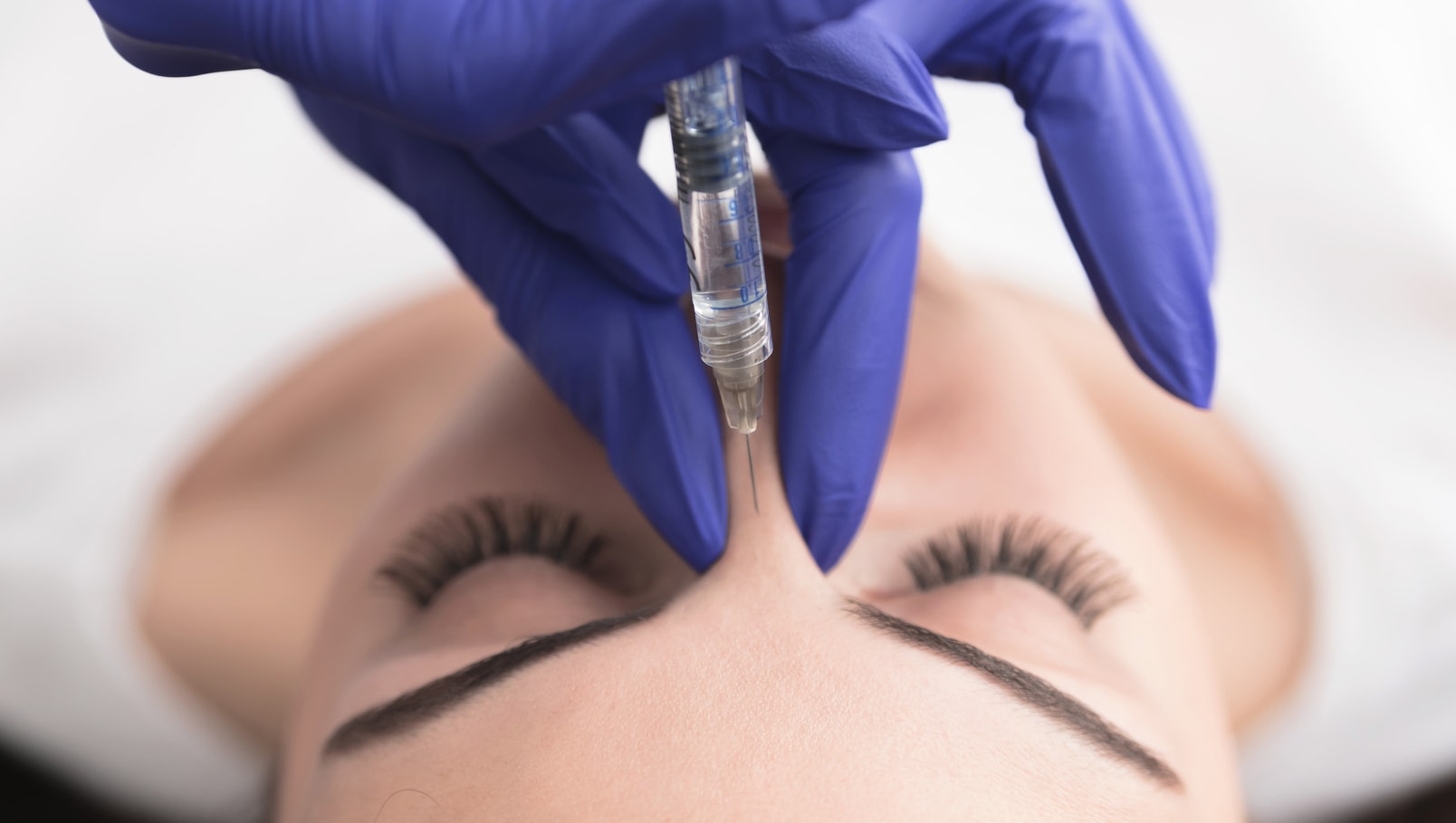
Non-surgical reduction rhinoplasty is an alternative form to traditional surgical reduction rhinoplasty. It can improve the general, cosmetic appearance of the nose, as well as improving the appearance of contour defects/irregularities.
Non-surgical reduction rhinoplasty is an ideal procedure for patients with large, round, and/or bulbous nasal tips. By adding dermal filler, the appearance of the nose can be reduced without actually removing any bone or cartilage. Often, refining and shaping the tip can result in a smaller looking nose without surgery.
The procedure is done by carefully placing dermal filler like Restylane, to various areas of the nose (bridge, tip, dorsum). This in-office procedure is performed in approximately 15 minutes with or without the use of topical anesthesia.
Surgical reduction rhinoplasty is a more lengthy procedure performed under general anesthesia. Outcomes can be unpredictable and may take months for final results to be visible. Because of the risk, time, cost, and recovery, many of patients opt for non-surgical methods.
Traditional surgical reduction rhinoplasty can improve the cosmetic appearance of the nose, as well as address functional breathing issues. This surgical procedure is performed under general anesthesia and may involve removal of some fat tissues, reducing the bone and cartilage, and/or excising the skin.
The ideal candidates fro non-surgical reduction rhinoplasty include patients with contour defects (crooked nose); smaller and flatter noses, and noses with humps. Additionally, the non-surgical method can refine or create tip contours. This procedure is ideal for patients who have had surgical rhinoplasty and need further refinement, as well as for those who want to add nasal definition without the risk, side effects, and recovery time from surgical reduction rhinoplasty.
Since traditional reduction rhinoplasty pertains mainly to the surgical approach, the main differences from the non-surgical approach include the need for general anesthesia and incisions, the amount of time required to perform the procedure and the length of recovery period. Non-surgical reduction rhinoplasty only requires the use of local anesthesia and injection of dermal fillers. The entire procedure can be completed in a matter of minutes and the patient can go home right away.
Another big difference between the surgical and non-surgical approach is that, in the latter, the doctor can reverse the effects of the dermal fillers if the patient is not pleased with the changes. For instance, if too much filler was used, the doctor can always administer an enzyme to dissolve the excess filler which cannot be done in the surgical method. In surgery, once the surgeon removes the tissues, that is it. These tissues cannot be attached back to the site from where they were removed. Furthermore, in the surgical approach, there will be so much swelling that the patient cannot see right away if he or she is already satisfied with the changes.
The limitation of non-surgical reduction rhinoplasty is that it cannot be performed in cases where the nose is too big and there is a real need to surgically reduce it. This includes cases where there is a lot of trauma to the nose that caused it to deviate or when there is an overgrowth of cartilage. Another limitation is the amount of improvements the procedure can produce. With traditional reduction rhinoplasty, the surgeon can make dramatic changes. Non-surgical reduction rhinoplasty will not change the patient’s nostril size, but it can make it look smaller by increasing the height of the nose bridge. If the patient has breathing problems resulting from functional defects, the procedure will not fix it because a septoplasty is the more appropriate treatment in that case.
Because non-surgical reduction rhinoplasty is non-invasive, the risk of long-term complications is low and all post-operative problems are short-term only. One short-term complication of non-surgical reduction rhinoplasty is potential injury to the skin. There may also be some pain or discomfort, bruising, swelling, allergic reaction and infection on the site of injection. The worst thing that can happen is injury to the blood vessels. This can occur if the doctor accidentally applies too much pressure while injecting the dermal fillers. If an artery or vein is hit, this can be a big complication because it will result in decreased blood flow to the skin which can lead to scarring. These complications are not permanent and should get better over time.
The result of a non-surgical reduction rhinoplasty are immediate and can last anywhere from six to 12 months. After this period, the patient may undergo regular follow-up or maintenance treatments.
Non-surgical reduction rhinoplasty is not necessarily a one-time procedure. Patients can opt for additional follow-up treatments if they want to. An interval of six months to one year is advised to give tissues enough time to heal. Maintenance treatments are recommended if the patient wishes to prolong the improvements.
Recovery from non-surgical rhinoplasty is minimal and can include bruising, swelling, and tenderness to the treated area. These side effects are most prevalent 24-48 hours post treatment and subside gradually over time.
In contrast, surgical reduction rhinoplasty recovery requires a lengthier downtime. Patients may want to take 1-2 weeks off before returning to work. Bruising, tenderness, and discomfort can be present during the first month post-operative. Suture and/or packing removal is typically removed 5-7 days post-op. Final results may be apparent 6-12 months post procedure.
Non-surgical reduction rhinoplasty is an excellent option for patients seeking to improve the appearance of their nose without the risks and recovery of the surgical alternative. The procedure has less complications, risks, and more predictable outcomes. Moreover, the procedure is reversible when using a Hyaluronic Acid based dermal filler like Restylane or Juvederm. Considering costs, downtime, and outcomes, non-surgical reduction rhinoplasty is an excellent option for patients.
Written by Cosmetic Town Editorial Team- MA
Based on an exclusive interview with David Mabrie, MD in San Francisco, CA